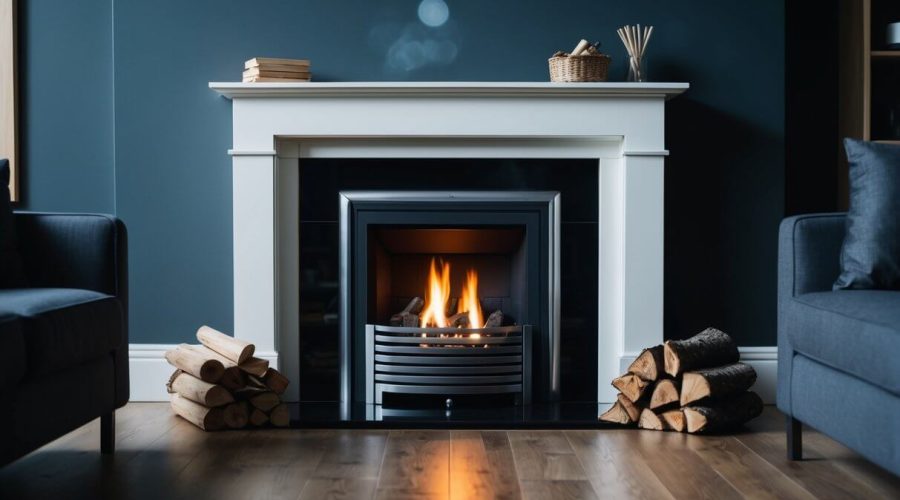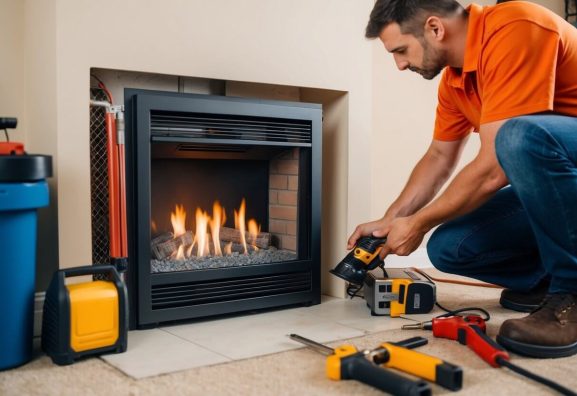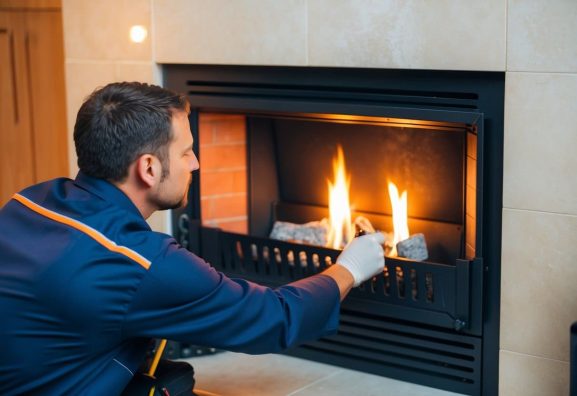When Gas Fireplace Won’t Light? Troubleshooting Tips
A gas fireplace can provide warmth and comfort, but when it won’t light, it can be a frustrating experience. Common reasons for a gas fireplace not lighting include issues with the pilot light, gas supply interruptions, and maintenance neglect. Understanding what might be causing the problem is the first step toward resolving it efficiently.
It’s essential to diagnose the issue properly to restore functionality. Many homeowners can troubleshoot basic problems themselves, such as ensuring the gas valve is open or cleaning the pilot light tube. Regular maintenance goes a long way in preventing these issues from occurring in the first place.
Investing time in understanding how a gas fireplace operates can lead to quicker fixes and fewer frustrations. By knowing how to identify common ignition issues, one can enhance the longevity and safety of their gas fireplace.
Key Takeaways
- Identifying the cause of ignition failures is crucial for effective troubleshooting.
- Regular maintenance helps prevent common issues with gas fireplaces.
- Understanding how your gas fireplace works empowers homeowners to address problems confidently.
Understanding Your Gas Fireplace
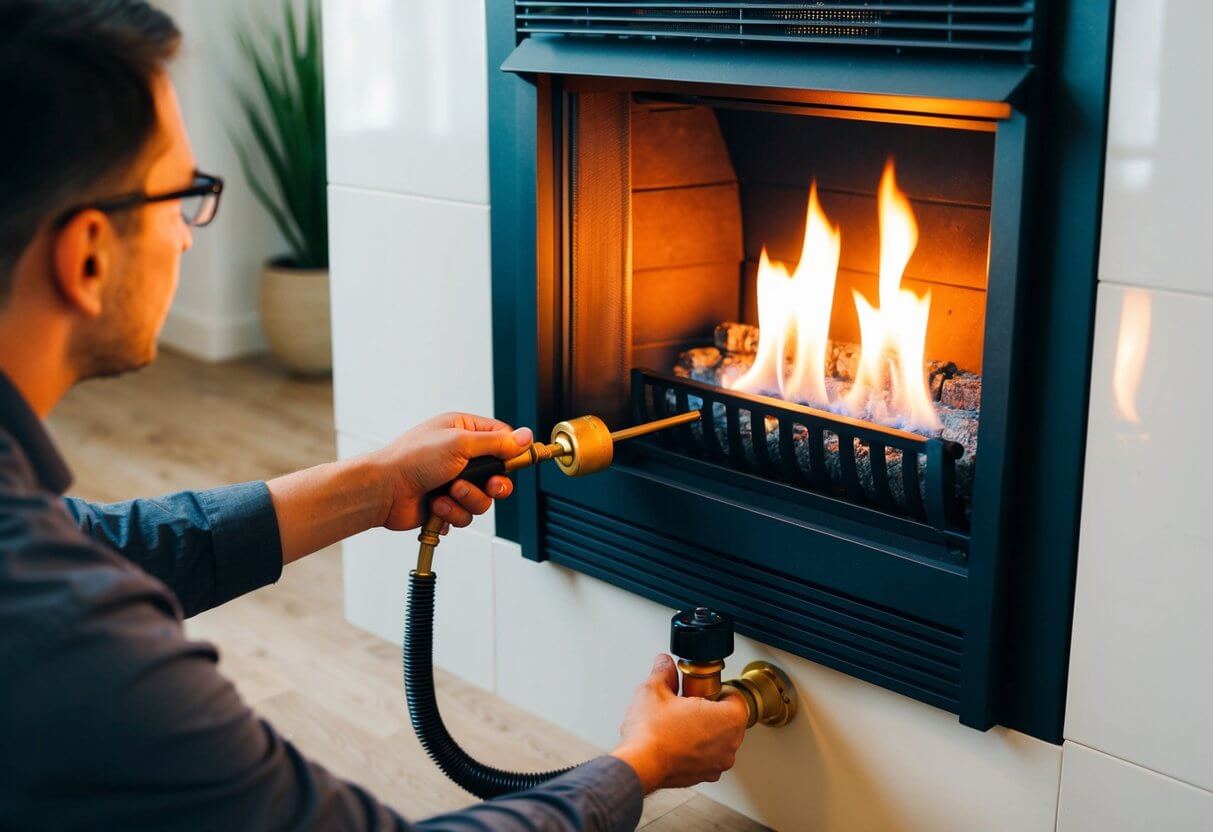
A gas fireplace comprises various components that work together to provide heating and ambiance. Familiarity with these parts and their functions enhances knowledge of potential issues and maintenance needs.
Components and Functionality
Key components of a gas fireplace include the gas valve, pilot light, thermocouple, and ignition system.
- The gas valve controls the flow of gas to the unit. It must be in the open position for the fireplace to ignite.
- The pilot light is a small flame that ignites the main burner when the gas is released. If it goes out, the fireplace will not light.
- The thermocouple is a safety feature that detects whether the pilot light is on. If it doesn’t sense heat, the thermocouple will close the gas valve, preventing gas leaks.
- Modern units may use an electronic ignition for starting up. This system is typically more reliable than traditional pilot lights and can improve efficiency.
Understanding these components helps troubleshoot issues when the fireplace fails to ignite.
Safety and Maintenance Considerations
Regular maintenance is essential for the safe operation of a gas fireplace. It should include checking the gas control valve and ensuring it operates correctly.
Safety checks should focus on the pilot light and thermocouple. A blocked pilot light tube can prevent ignition.
Maintenance tasks include:
- Inspecting for gas leaks.
- Cleaning the pilot light tube.
- Testing the ignition system to ensure reliability.
Following a regular maintenance schedule can extend the life expectancy of a gas fireplace. Homeowners should consult a professional for comprehensive checks and repairs when needed. Proper care minimizes risks such as gas leaks and ensures efficient operation.
Common Ignition Issues
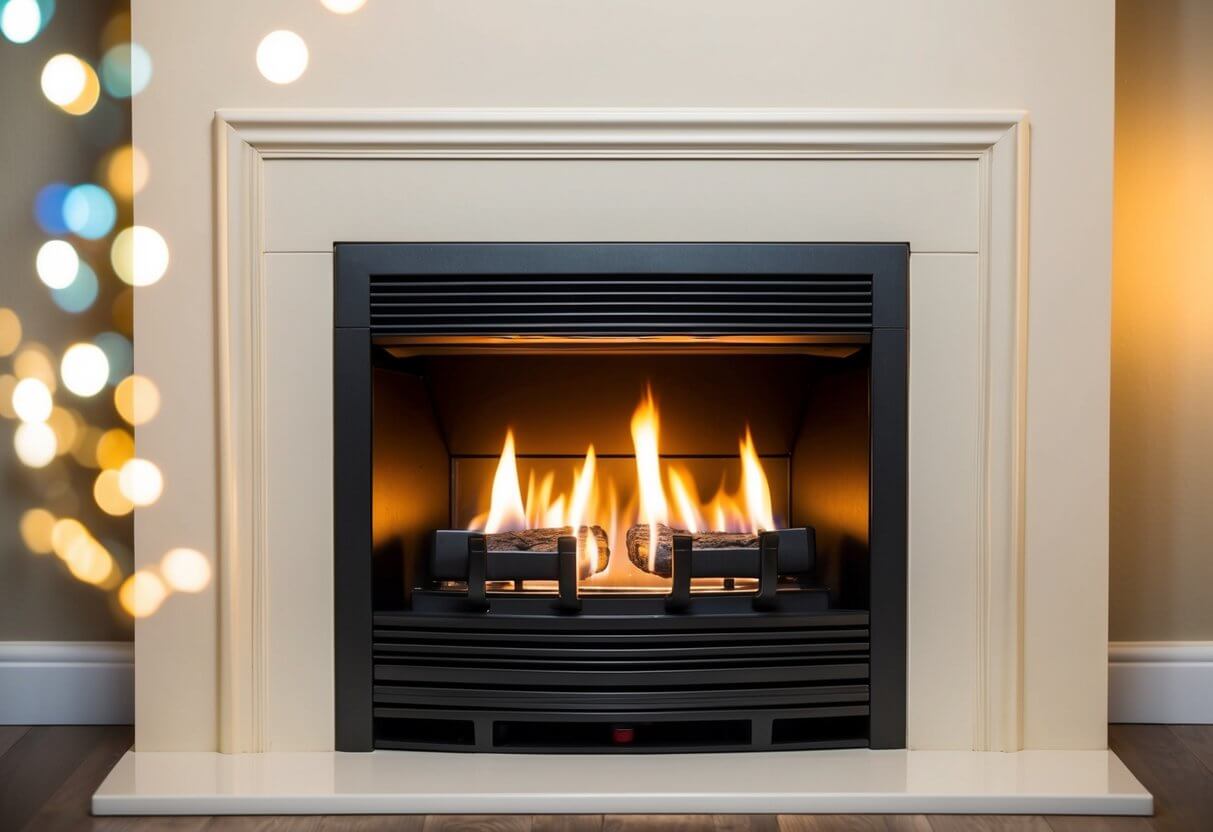
Ignition issues in gas fireplaces can stem from various complications, each requiring careful attention to identify and resolve. The following sections address frequent problems with pilot lights, electric ignition systems, and gas supply.
Pilot Light Malfunctions
Pilot light malfunctions are a common reason gas fireplaces fail to ignite. A disconnected pilot light can prevent ignition. Its flame should be steady and blue; a yellow or flickering flame indicates issues. If the pilot light won’t stay lit, check for blockages in the thermocouple, gas line, or pilot orifice.
Steps to troubleshoot:
- Relight the pilot: Follow the manufacturer’s instructions.
- Inspect the thermocouple: Ensure it is functioning properly; a broken thermocouple needs replacement.
- Adjust flame height: A low flame may not heat the thermocouple adequately.
Cleaning the pilot light area and ensuring proper positioning can also help eliminate these problems.
Electric Ignition Troubles
Electric ignition systems utilize a spark ignitor to light the gas. Common problems include faulty wiring or a defective ignitor. If the ignition system doesn’t produce a spark, it might be due to a blown fuse or loose connections.
To troubleshoot electric ignitors:
- Check power supply: Ensure the unit is plugged in and functioning.
- Inspect the spark ignitor: Examine for rust or debris that may hinder performance.
- Test electrical connections: Tighten any loose wires.
Cleaning the ignitor periodically will help maintain optimal performance. If issues persist, the ignitor may need replacement.
Gas Supply and Pressure Problems
Gas supply issues often arise from insufficient pressure or blockages in the gas line. This can lead to a delayed ignition or failure to ignite altogether.
Key factors to consider:
- Gas pressure: Check the pressure gauge to ensure it meets manufacturer specifications.
- Blockages: Inspect the gas line for obstructions or dirty burners that restrict flow.
- Compressed air: In some cases, using compressed air can help clear the line.
Resolving these issues may require professional help for gas fireplace repairs, especially if the problem relates to adjustments in the gas supply system. Regular maintenance checks can help prevent these issues from arising.
Regular Maintenance Procedures
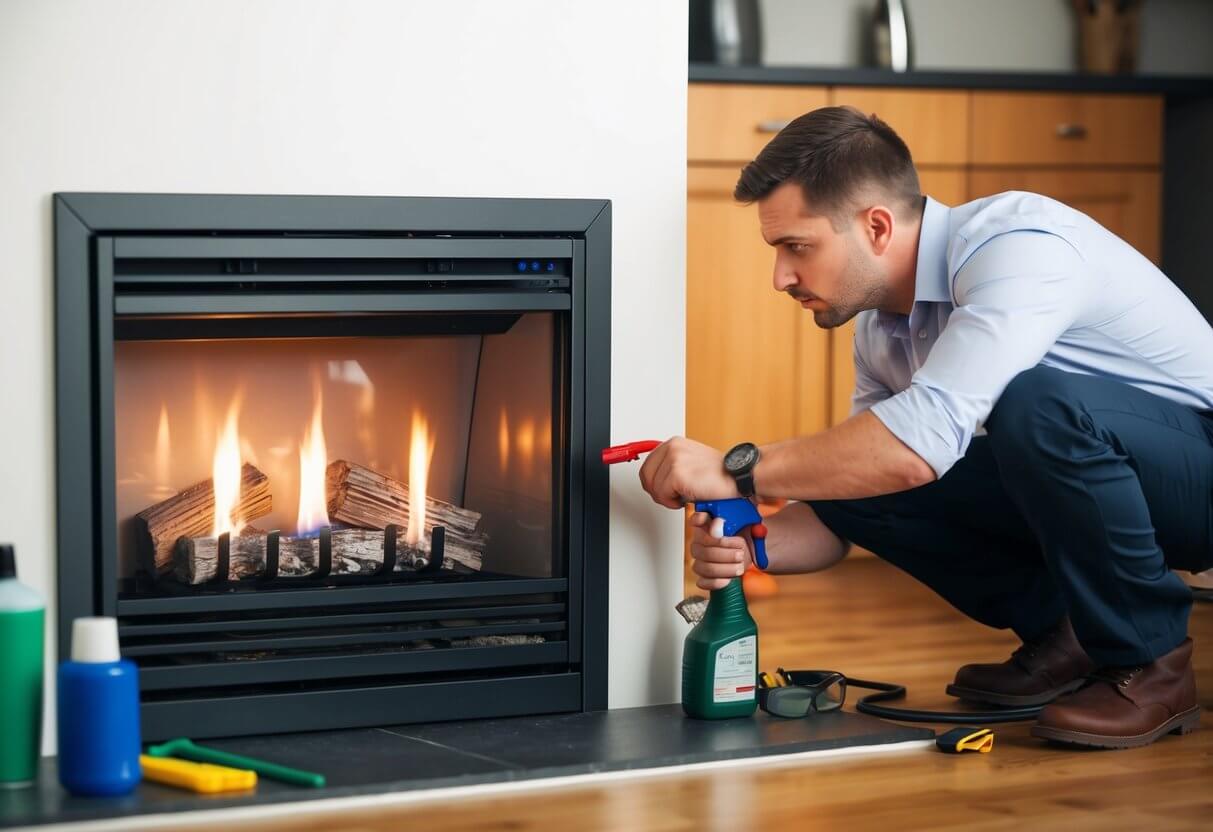
Routine maintenance is essential for ensuring a gas fireplace operates efficiently and safely. Proper upkeep can prevent common issues like clogged burner ports and dirty components that can lead to a failure to ignite.
Cleaning and Inspections
Regular cleaning of the gas fireplace is crucial. It is important to inspect the burner assembly for carbon residue and other debris that may obstruct gas flow. A clean gas opening and unobstructed burner ports promote a consistent flame and prevent safety hazards.
Homeowners should focus on cleaning the following components:
- Burner ports: Ensure they are clear and free of blockages.
- Glass doors: Clean to maintain visibility and aesthetic appeal.
- Logs and decorative elements: Remove dust and soot build-up.
Inspections should be conducted at least once a year. Look for any signs of wear, especially around the gas valve and connections, to avoid malfunctions.
Professional Gas Fireplace Services
Engaging a professional for gas fireplace maintenance can ensure that all safety checks are thoroughly conducted. Technicians possess the expertise to inspect components such as the burner assembly, thermocouple, and ventilation systems.
During a service visit, they will typically perform:
- A detailed inspection of the entire fireplace system.
- Cleaning of the gas fireplace and necessary adjustments.
- Testing for leaks in the gas line and connections.
Professional services are recommended at least annually. They can identify issues that a homeowner might miss, ensuring the fireplace operates safely and efficiently.
Troubleshooting Your Fireplace
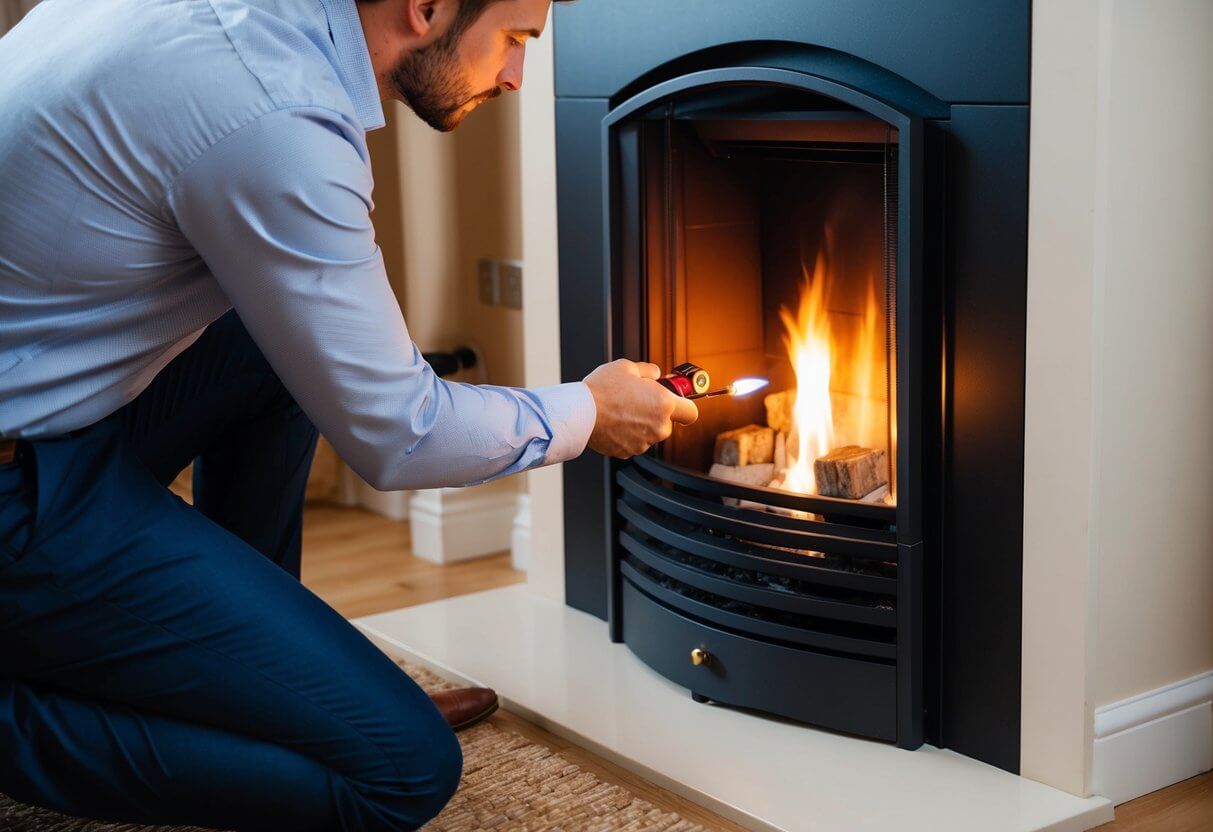
When a gas fireplace won’t light, several specific issues may be the cause. A systematic approach can help identify the problem, from checking the gas line to ensuring the spark igniter functions properly.
Step-by-Step Diagnostic Guide
- Check the Gas Supply: Ensure the gas valve is in the “on” position. If it remains off, the fireplace will not light.
- Inspect the Remote Control: If using a remote, verify that the batteries are charged. A dead battery can prevent the fireplace from activating.
- Examine the Gas Control Valve: This component could be malfunctioning. If the valve does not open, it will restrict gas flow to the burner.
- Test the Spark Igniter: The igniter creates a spark to ignite gas. If it is not functioning, replace it or check the wiring for issues.
- Look for Blockages: Check the gas line for any obstructions that could prevent gas flow. Additionally, inspect the burner for debris that might block ignition.
- Review Electrical Connections: Make sure there are no tripped breakers or overloaded circuits that could affect the fireplace’s power supply.
When to Call a Professional
If troubleshooting does not resolve the issue, it may be time to contact a professional. An experienced technician can identify complex problems related to the gas line or internal components.
Signs that warrant a professional inspection include:
- Persistent Ignition Issues: If the fireplace repeatedly fails to light or only lights occasionally, professional help may be necessary.
- Gas Odor: If a strong gas smell is present, it indicates a serious issue. Emergency services should be contacted immediately.
- Irregular Flame Appearance: A yellow or flickering flame can signal improper combustion, requiring expert assessment.
Utilizing professional services ensures safety and proper functionality, allowing the fireplace to operate correctly.
Preventive Measures and Tips
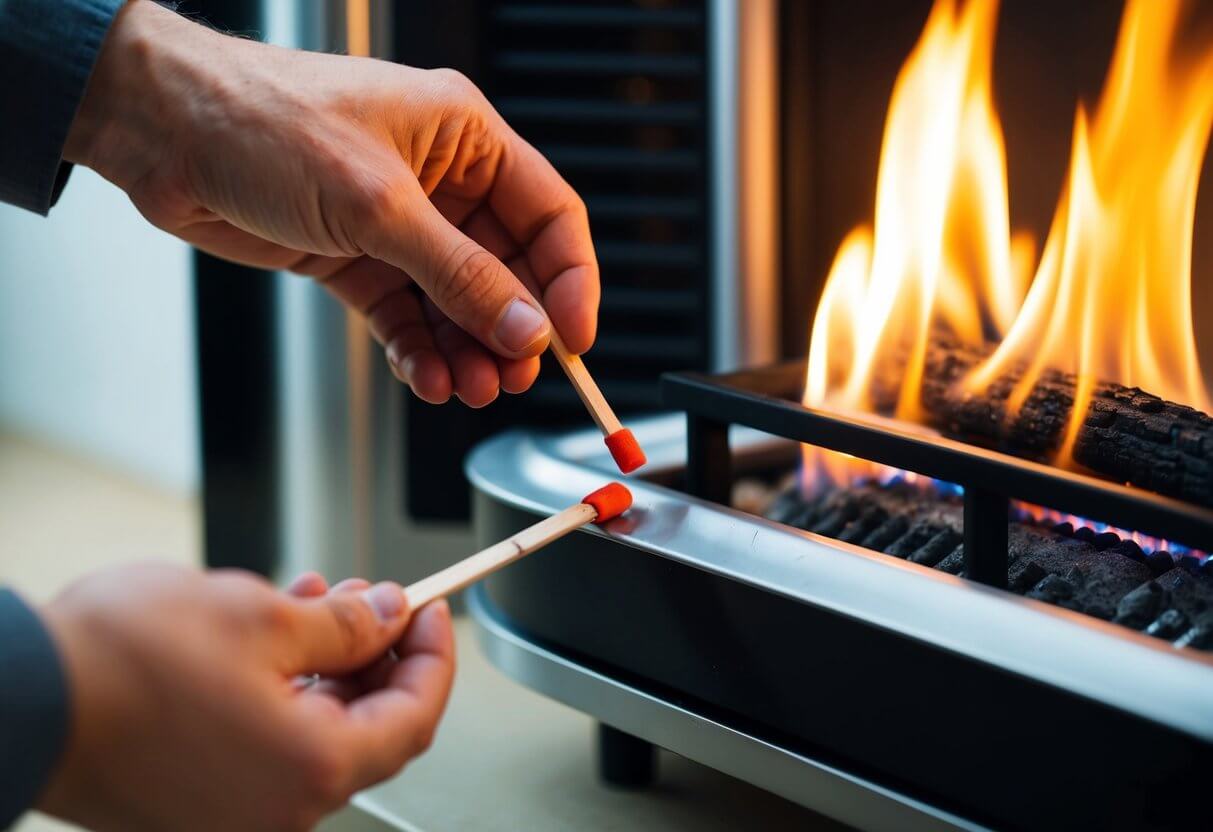
Maintaining a gas fireplace ensures its proper functioning and extends its lifespan. By following specific guidelines, one can minimize common issues and promote efficient performance.
Avoiding Common Problems
Regular maintenance is crucial to prevent issues with a gas fireplace. Check the pilot light consistently; if it appears orange instead of blue, it may indicate incomplete combustion, requiring attention.
Cleaning is vital. Dust and debris can accumulate around the burners and pilot assembly, affecting ignition. Use a soft brush to remove dirt and ensure unobstructed airflow.
Homeowners should inspect for drafts. Sealing gaps around doors and windows can help maintain proper airflow, ensuring the fireplace operates efficiently.
Familiarize oneself with the fireplace key, ensuring it’s readily available and functioning to avoid complications during operation.
Ensuring Long-Term Performance
To ensure long-term performance, schedule annual maintenance checks with a professional technician. This helps identify potential problems early, such as gas line leaks or faulty thermocouples.
Using quality fuel can enhance reliability. Ensure the gas supply is clean and that the connections are secure. Any noticeable smell of gas should be addressed immediately by a professional.
Regularly replace any worn parts or components. This includes ignition systems and the thermocouple.
Adopting these preventive measures leads to fewer repairs and greater peace of mind when using the fireplace, keeping it cozy and functional for years to come.
Frequently Asked Questions
Addressing common concerns regarding gas fireplace ignition can clarify potential issues. Understanding specific troubleshooting steps will help identify and resolve problems effectively.
What are common reasons for a gas fireplace failing to ignite even when the pilot light is on?
Several factors can contribute to this issue. A clogged burner orifice could prevent gas from flowing properly. Low gas pressure or a faulty thermocouple may also inhibit ignition despite the pilot light being active.
What steps should be taken to troubleshoot a gas fireplace that won’t turn on with a remote?
First, check the batteries in the remote to ensure they are functioning. If the remote is operational, inspect the receiver unit for any disconnections or malfunctions. Ensuring that there is no interference from other electronics is also crucial.
What could be preventing a gas fireplace from lighting despite the electronic ignition working?
If the electronic ignition functions but the fireplace still does not light, the gas supply may be interrupted. Additionally, a blockage in the gas line or an issue with the valve can impact ignition.
How can one reset a gas fireplace that is not responding to control inputs?
To reset the fireplace, turn off the main gas supply and wait a few minutes. Then, turn it back on and attempt to ignite the fireplace again using the control panel or remote. This process can help clear any temporary faults.
Why might a gas fireplace not burn or turn on when the wall switch is flipped?
If the wall switch is flipped but there is no ignition, it could indicate an electrical issue. Checking for power at the switch and ensuring that the wiring is intact might reveal the problem.
What should be examined if a ventless gas fireplace does not ignite, but the pilot light is functioning?
In cases where the pilot light is on, inspect the gas supply to the burner. Additionally, ensure that there are no blockages in the burner or any safety mechanisms triggered that prevent full ignition.

